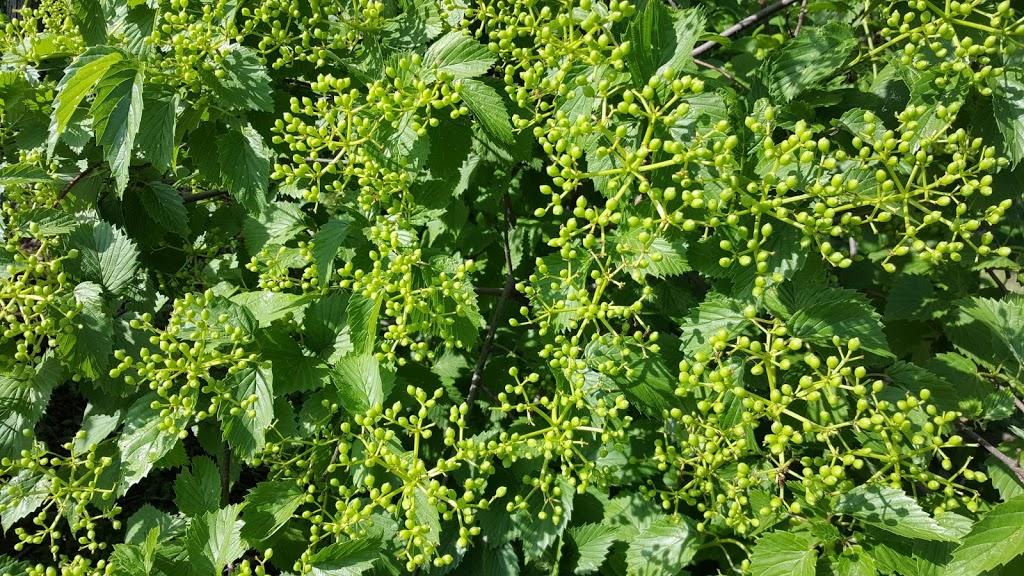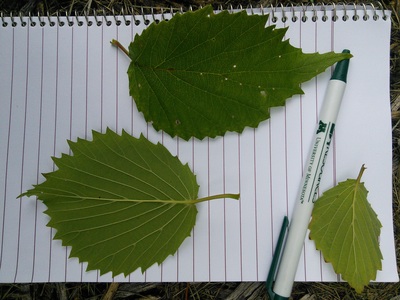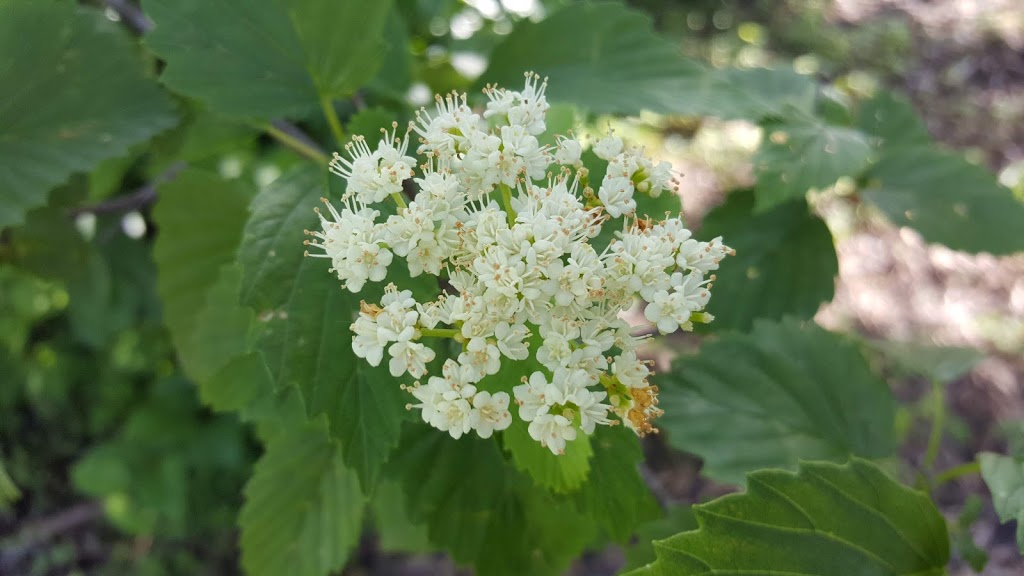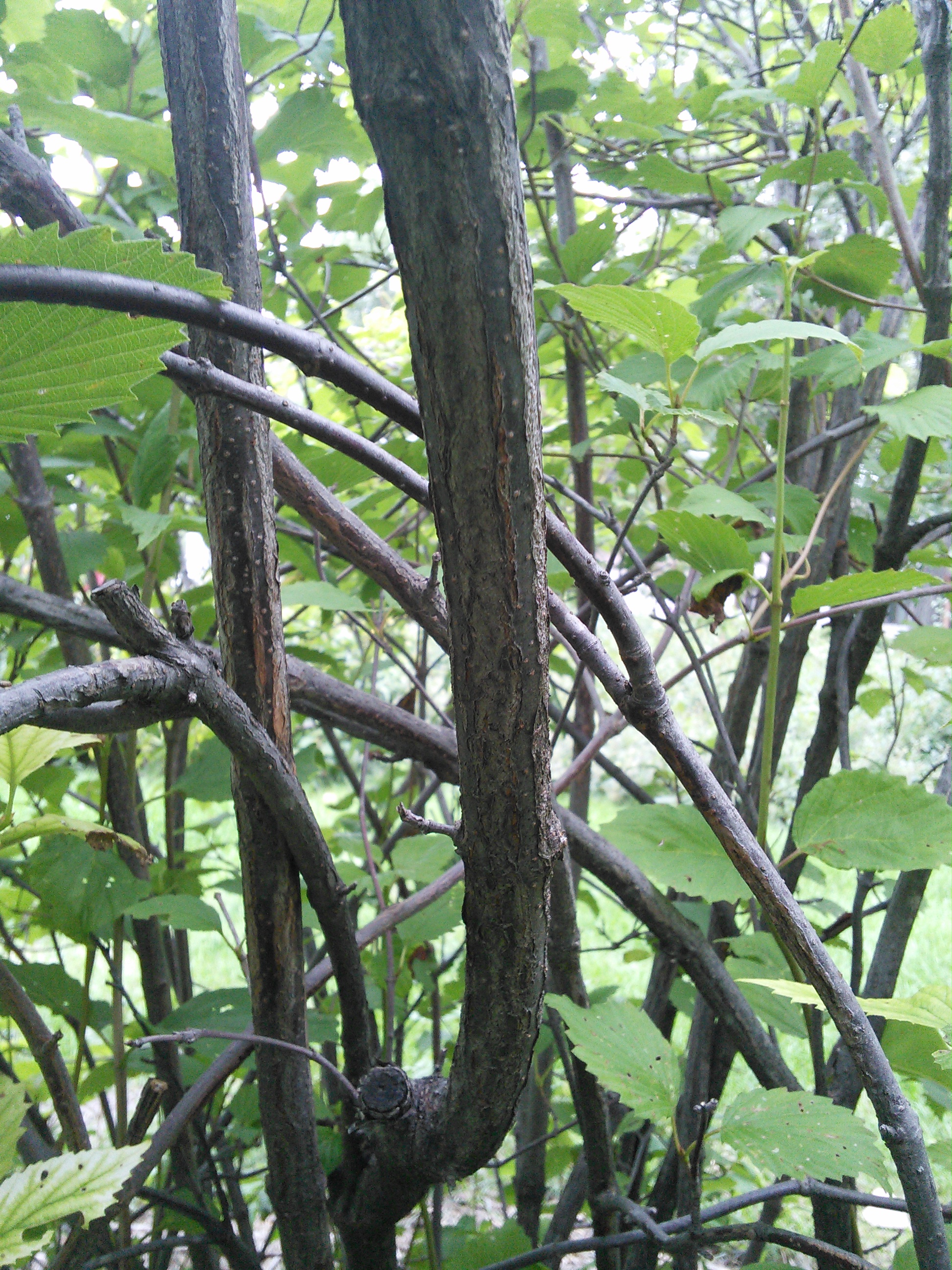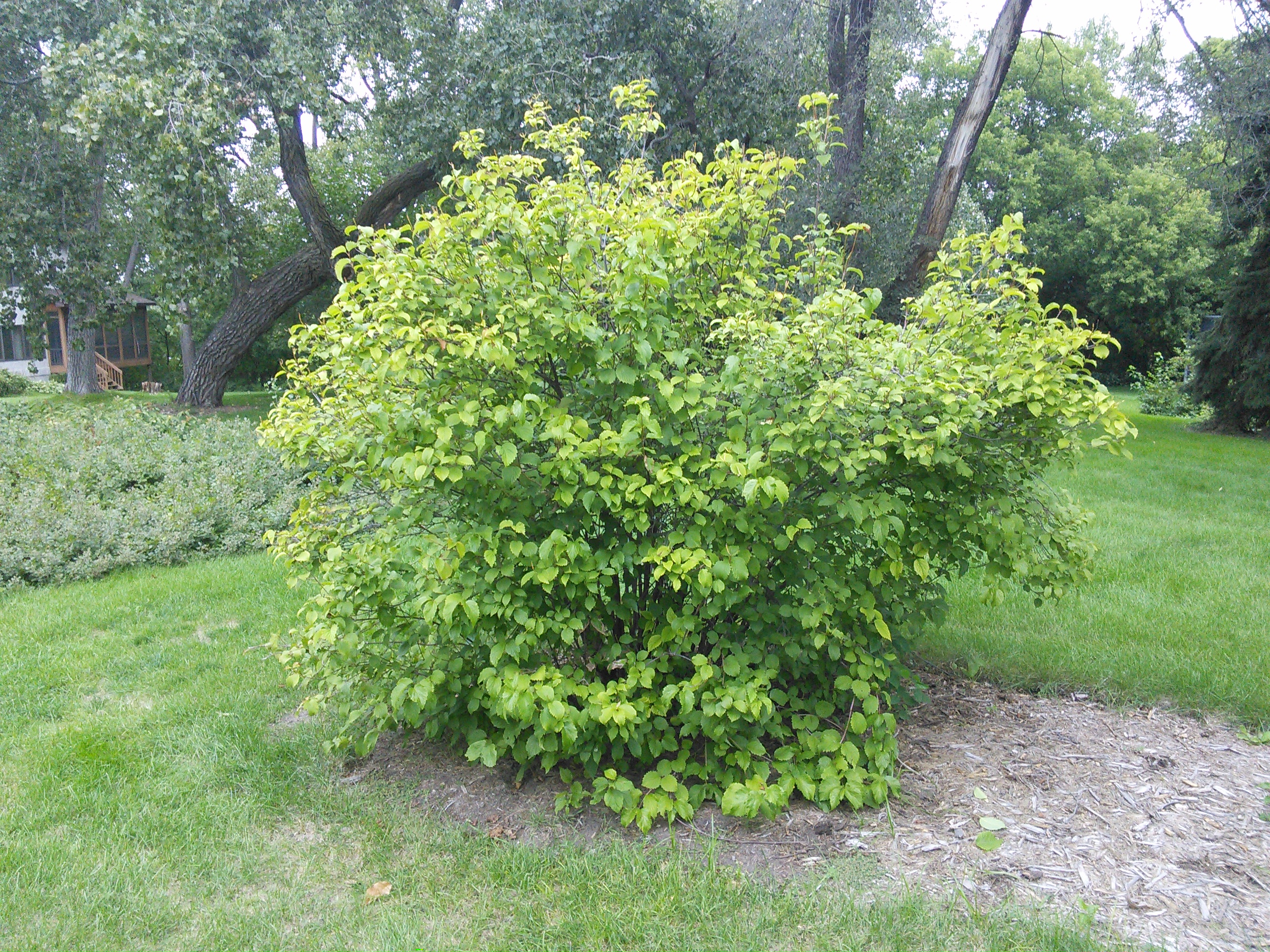Common Name: arrowwood, arrowwood viburnum
Scientific Name:
Family: Adoxaceae
Genus: Viburnum
Species: dentatum
Hardiness Zone: 3 to 8
Height: 6 to 10 ft
Width: 6 to 10 ft
Common Characteristics:
Arrowwood (Viburnum dentatum) is a very winter-hardy shrub growing between 3 and 10 feet in height with a spread of up to 8 feet and a generally rounded appearance. The plant has slender, downy twigs with ridges and gray/brown bark. Its buds are small, green-brown, and glossy. Arrowwood’s deciduous leaves are dark green, shiny, and oval with jagged edges. In the fall, they turn yellow or red. Its flowers are creamy-white, emerge in early summer, and will turn into ¼” blue-black berry-like fruit known as a drupe maturing from August to November. The flowers arranged in flat-topped clusters are not scented.
Where it Grows:
The shrub will tolerate being planted in shade, partial shade, or full sun. It can be found naturally in a variety of conditions but generally prefers moist soil that is neutral to acidic. Arrowwood can be found along wood margins and open woods, and along stream banks. It can tolerate both occasional drought and occasional flooding.
How it's Used:
Arrowwood is not an ornamental shrub but is very winter hardy and reliable. It can be used for hedging or screening. V. dentatum can be propagated either by seed or softwood cuttings (Davis et al.). The plant will naturally spread clonally by suckering or rhizomes, or via seed dispersal. The common name is said to originate from the fact that the Indigenous community had used the stems of the plant to make arrows.
Ecosystem Services:
The shrub attracts butterflies, bumblebees, and other native bees. Fruit attracts small mammals birds such as the eastern bluebird, northern flicker, gray catbird, and American robin (Lady Bird Johnson). The plant is also a caterpillar and larval host to the hummingbird moth and a nectar source to red admiral butterflies.
Where it is Native to:
Arrowwood is native to the United States and has a rather large range. It is found across the eastern United States from Maine south to Florida and westward to the central region of the United States from Iowa south to Texas.
Known Varieties and Their Traits:
- Autumn Jazz® arrowwood viburnum (Viburnum dentatum ‘Ralph Senior’): Compact, vase-shaped form growing 8 to 10 feet high and 10 to 12 feet wide. Glossy, dark green leaves turn a combination of yellow-orange-red –burgundy in the fall. This cultivar is a Chicagoland Grows® introduction.
- Blue Muffin™ arrowwod viburnum (Viburnum dentatum 'Christom'): A compact selection reaching 5 to 7 feet high and 6 to 8 feet wide. Medium green foliage turns a orange to red in fall. Intense blue berries in autumn.
- Cardinal™ arrowwood viburnum (Viburnum dentatum 'KLMThree'): A Roy Klehm inroduction; 8 to 10 feet high and 6 to 8 feet wide; upright vase-shaped; burgundy fall colors turns bright red.
- Chicago Lustre® arrowwood viburnum (Viburnum dentatum ‘Synnestvedt’): This cultivar has a uniform, upright, rounded form reaching 8 to 10 feet high and 8 to 10 feet wide. Lustrous, dark green leaves turn a mild red-purple in the fall. This cultivar is a Chicagoland Grows® introduction.
- Crimson Tide™ arrowwood viburnum (Viburnum dentatum 'KLMsix'): Upright, vase-shape reaching 8 to 10 feet tall and 6 to 8 feet wide; burgundy -red fall color.
- Little Joe™ arrowwood viburnum (Viburnum dentatum 'KLMseventeen'): A dwarf, rounded form reaching 4 feet high and wide; purple green fall color. A good pollinator for Blue muffin arrowwood viburnum.
- Northern Burgundy® arrowwood viburnum (Viburnum dentatum ‘Morton’): An upright habit reaching 10 to 12 feet high and 8 to 10 feet wide. Glossy, dark green leaves turn a burgundy-red in the fall. This cultivar is a Chicagoland Grows® introduction selected from The Morton Arboretum collections.
- Red Feather® arrowwood viburnum (Viburnum dentatum 'JN Select'): Rounded, 8 to 10 feet high and 10 to 12 feet wide; new growth is two-toned, maroon and green (resembles the feathers at base of arrow); 2 to 5 inch wide, white flower clusters followed by blue-black berries in autumn. Fall color is reddish-purple.
Problems:
Viburnum leaf beetle (Pyrrhalta viburni) is a beetle native to Europe and Asia that feeds exclusively on Viburnum foliage. Current reports state that it has been found in eastern Canada, New York, Maine, Pennsylvania, Vermont, and Ohio. For more information on viburnum leaf beetle see: http://www.hort.cornell.edu/vlb/
References:
Davis, Kathy M.; Kujawski, Jennifer L. 2001. Propagation protocol for vegetative production of container Viburnum dentatum plants (1 gal container); Natural Resources Conservation Service - Norman A. Berg National Plant Materials Center, Beltsville, Maryland. In: Native Plant Network. URL: http://www.nativeplantnetwork.org (accessed 25 February 2015). Moscow (ID): University of Idaho, College of Natural Resources, Forest Research Nursery.
Lady Bird Johnson Wildflower Center
US Department of Agriculture, NRCS
